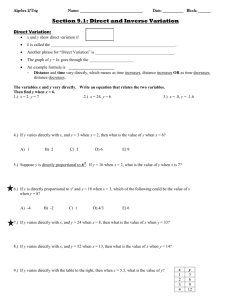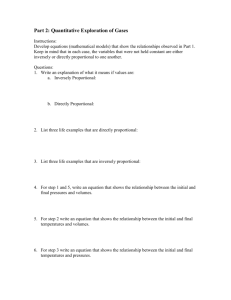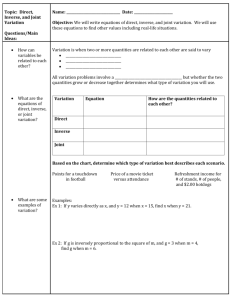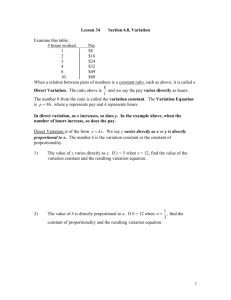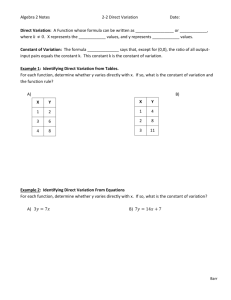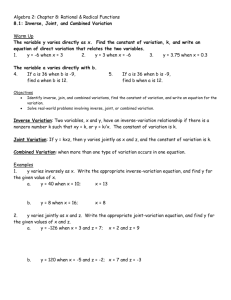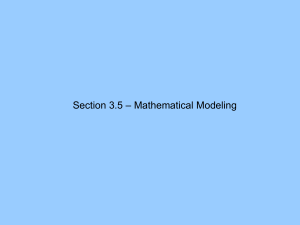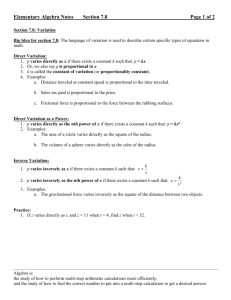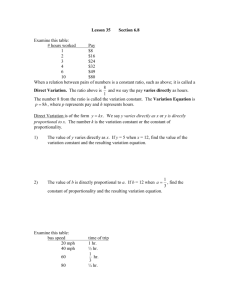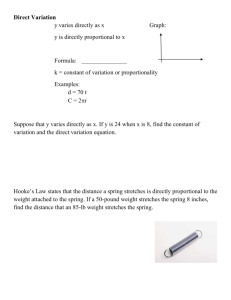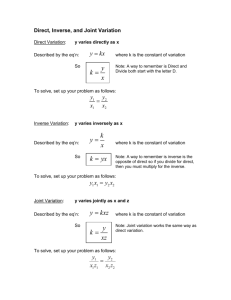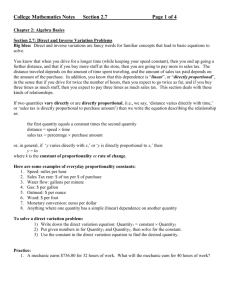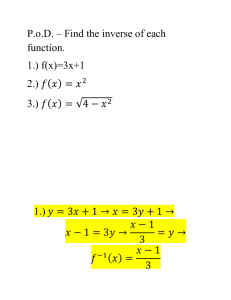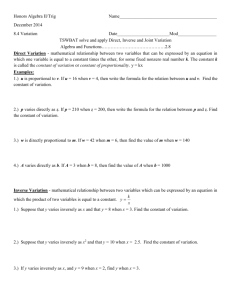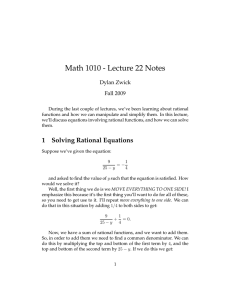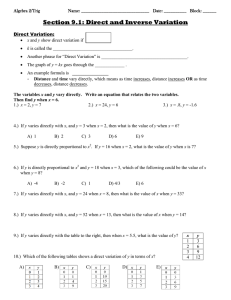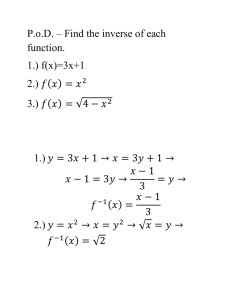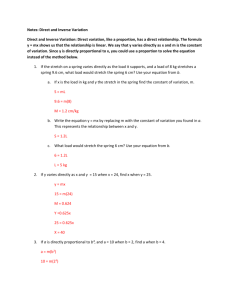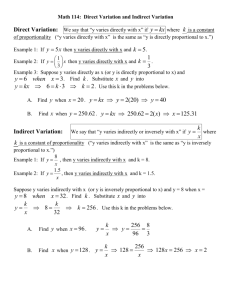Direct Variation I. Direct Variation: Basic background stuff Direct
advertisement
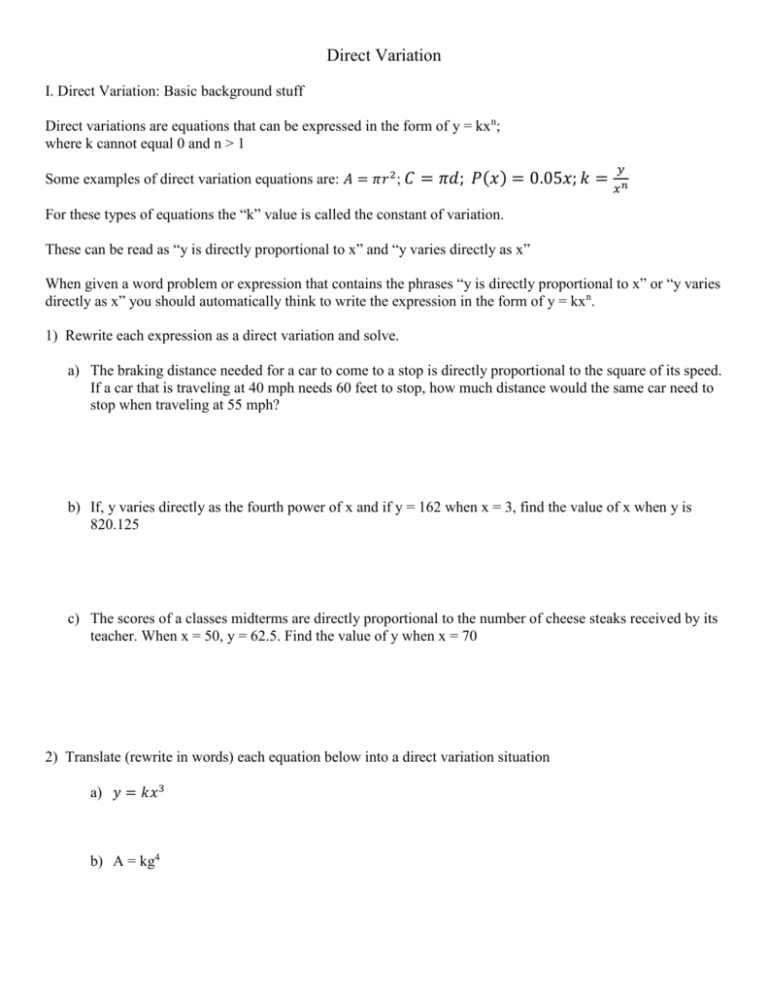
Direct Variation I. Direct Variation: Basic background stuff Direct variations are equations that can be expressed in the form of y = kxn; where k cannot equal 0 and n > 1 Some examples of direct variation equations are: 𝐴 = 𝜋𝑟 2 ; 𝐶 = 𝜋𝑑; 𝑃(𝑥) = 0.05𝑥; 𝑘 = 𝑦 𝑥𝑛 For these types of equations the “k” value is called the constant of variation. These can be read as “y is directly proportional to x” and “y varies directly as x” When given a word problem or expression that contains the phrases “y is directly proportional to x” or “y varies directly as x” you should automatically think to write the expression in the form of y = kx n. 1) Rewrite each expression as a direct variation and solve. a) The braking distance needed for a car to come to a stop is directly proportional to the square of its speed. If a car that is traveling at 40 mph needs 60 feet to stop, how much distance would the same car need to stop when traveling at 55 mph? b) If, y varies directly as the fourth power of x and if y = 162 when x = 3, find the value of x when y is 820.125 c) The scores of a classes midterms are directly proportional to the number of cheese steaks received by its teacher. When x = 50, y = 62.5. Find the value of y when x = 70 2) Translate (rewrite in words) each equation below into a direct variation situation a) 𝑦 = 𝑘𝑥 3 b) A = kg4 II Direct Variation: Graphs On your calculator graph each of the direct variation equations shown and complete the table below Equation y = 5x y = -5x y = 5x2 y = -5x2 Graph Domain Range Type of Symmetry (x /y/origin) III. Inverse Variations Inverse variations are written in the form of: y k , where k cannot equal 0 and n > 1. xn They have the same applications as direct variations. They are read as “y is inversely proportional to x” and “y varies inversely as x” Application: 1. The weight of a body above the Earths surface varies inversely as the square of its distance from the center of the Earth. If an astronaut weighs 165 lbs on the surface of the Earth, what would he weigh 18,000 miles above the Earth’s surface. (The radius of the Earth is about 4,000 miles) IV. Graphs of inverse variations Complete the table below Equation y = 5/x y = -5/x y = 5/x2 y = -5/x2 Graph Domain Range Symmetry Asymptotes
